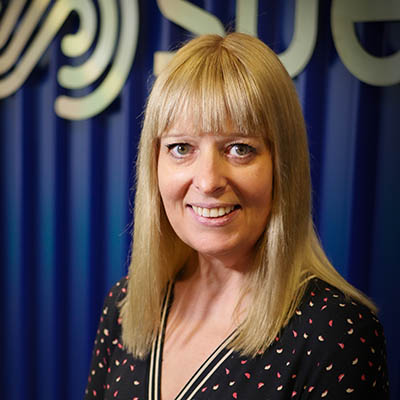Where bias and discrimination intersect

One such moment for me happened last year at a conference on health and wellbeing at work. During a session on the theme of intersectionality between race and neurodiversity, I was moved by a panel member who spoke of his experience as a black man with dyspraxia. Tumi Sotire is a health economist and researcher at Newcastle University who, as The Black Dyspraxic, advocates for greater awareness of neurodiversity and the importance of intersectionality.
The term was coined in 1989 by an American academic, Professor Kimberlé Crenshaw, to describe how race, class, gender, and other individual characteristics ‘intersect’ with one another and overlap. Originally intended to convey the more complex discrimination faced by women from an ethnic minority, intersectionality has become a useful concept for understanding the different yet interconnected layers and forms of inequality, bias and privilege in society more widely.
Age, income, religion, education, class, culture, and a host of other factors – as well as ethnicity, disability, gender, sexual orientation and neurodivergence – determine our unique lived experience.
This intersectionality can compound the challenges marginalised people face in their daily lives by reinforcing prejudice and disadvantage. Recognising this, in turn, challenges us as employers, HR practitioners, and work colleagues to do more to ensure our workplace is an equitable space for everyone.
Going beyond good intentions
Intersectionality informs my approach to promoting inclusion and diversity at SUEZ recycling and recovery UK and also how I view what we must address in the waste and resources sector and beyond in society more widely. It reinforces my belief that we must go beyond good intentions and words about inclusion and show genuine commitment through action to create a truly equitable waste, resources and environmental services sector. We recognise the relevance of intersectionality in various ways at SUEZ.
In previous posts, this blog has described how our different network groups support, empower, and represent women, ethnic minority, LGBTQIA+ colleagues, employees with a disability, and veterans. We also have an over-arching Inclusion & Diversity Network that brings all our sub-groups together to share, learn from each other, and advocate for positive change. All SUEZ recycling and recovery UK’s leadership team are members of our Inclusion & Diversity Network and hold a strategic inclusion and diversity meeting on a quarterly basis.
Our ambassadors for wellbeing and inclusion promote this holistic approach too. Their training is designed to ensure they have a sound understanding of the different aspects of mental health and dimensions of a psychologically safe workplace. As I pointed out in a LinkedIn post on banter and boundaries, every individual has their own boundaries and identity that must be treated with respect if they are to truly feel they belong in any organisation – that they can be their authentic self there.
While hosting employee groups can provide solidarity and support, sometimes help needs to be personalised. In 2023 we started organising health roadshows that include the opportunity for a one-to-one discussion with members of our occupational health team, Wellness International. The tailored sessions we ran for men’s health month in 2023 were well received. We took the same approach this year for International Women’s Day. It means colleagues can benefit from specific, tailored advice as well as the generic health information we share with all employees.
Our Wellness for All programme, which this year is focusing on Respect and Resilience, also addresses intersectionality by helping individuals understand and navigate their own and others’ intersecting identities. Our aim is to ensure that everyone is able to access the information or support they need to thrive at work.
Tumi’s wellness webinar
It was a pleasure then to invite Tumi to attend our recent Inclusion & Diversity Network meeting in February, and to deliver a training session on intersectionality to all our network members. Tumi was also our guest speaker for a webinar in our Wellness for All series.
Tumi, who describes himself as a British-born Nigerian, was diagnosed aged four with dyspraxia. A neurodevelopmental disorder, dyspraxia causes difficulty with actions requiring coordination and social anxiety. But it can also impact the ability to plan and carry out organisational tasks, or drive a car, and even sleep.
When at school, worse for Tumi than being picked last every time for team games was having to endure name-calling and being told by other children that he’d always be a failure. The eventual toll on his mental health led to him leaving sixth form, but he still went on to university and a career with blue-chip companies in IT, gaming and music.
As well as his advocacy work, Tumi is working towards a PhD on the economics of the inequalities associated with neurodiversity.
In his webinar presentation, Tumi highlighted the tendency, when we talk about discrimination, to focus on just one aspect – be it gender, requiring a wheelchair, or the colour of someone’s skin. But we need to recognise the unique set of challenges any individual may face and understand that different inequalities together have compounding effects, multiplying the level of disadvantage suffered.
“We all have a combination of lived experience, privilege bias and barriers that make us who we are. Prioritising intersectionality ensures that no-one gets left behind,” he explained.
Multiple answers
As Tumi acknowledges, this intersectionality of inequalities and discrimination is complicated. But that’s no excuse for inaction. Life is complicated and so are people. Intersectionality is a framework for exploring the multiple characteristics that shape people’s experience.
By educating and informing ourselves and colleagues we can be more effective allies and do more to dismantle the barriers to inclusion and equity. Tumi challenged us to be constantly aware of our own privileges and bias, and how they affect our outlook, and to be always striving to improve.
Currently at SUEZ, we have several working groups exploring how our leaders can promote inclusion and diversity with the aim of enhancing mentorship and social mobility. We’re seeing more allies coming forward across the business in response to our Inclusion & Diversity network and educational activities.
How else can we go beyond awareness-raising and take inclusivity to the next level? That’s a question we will continue asking. Intersectionality demands multiple answers.
